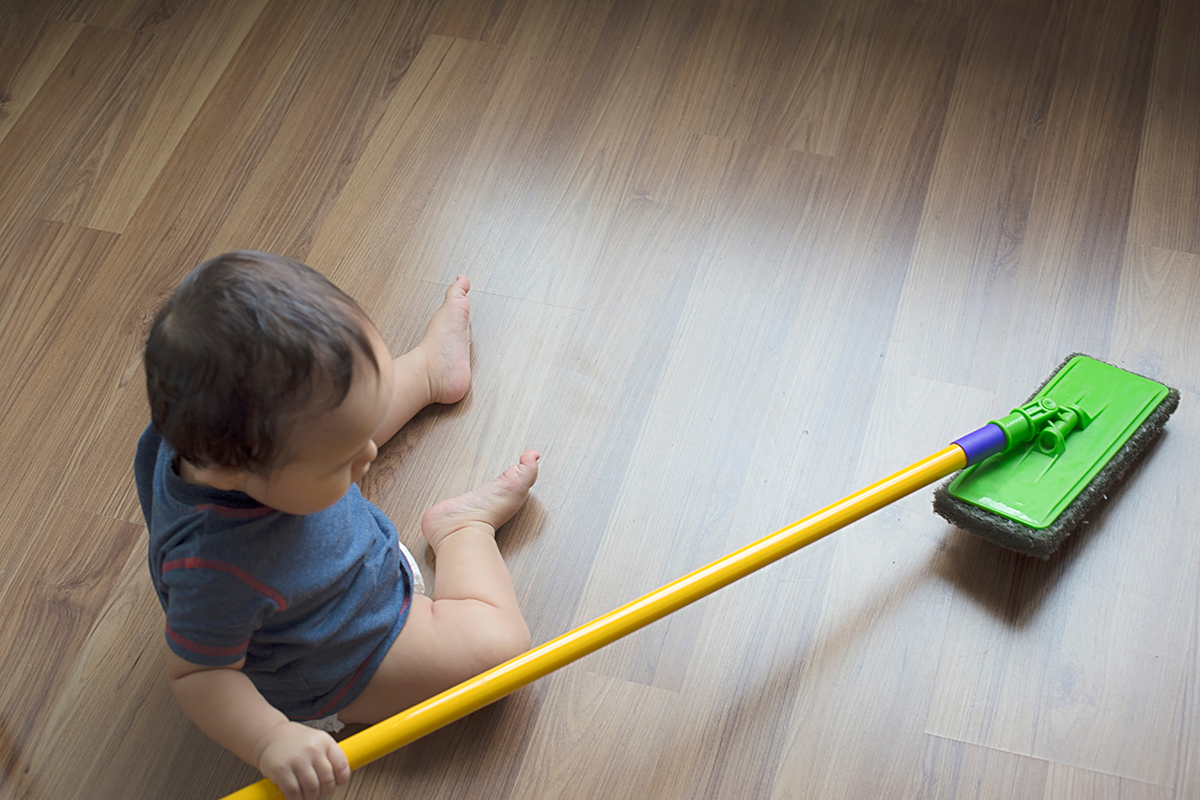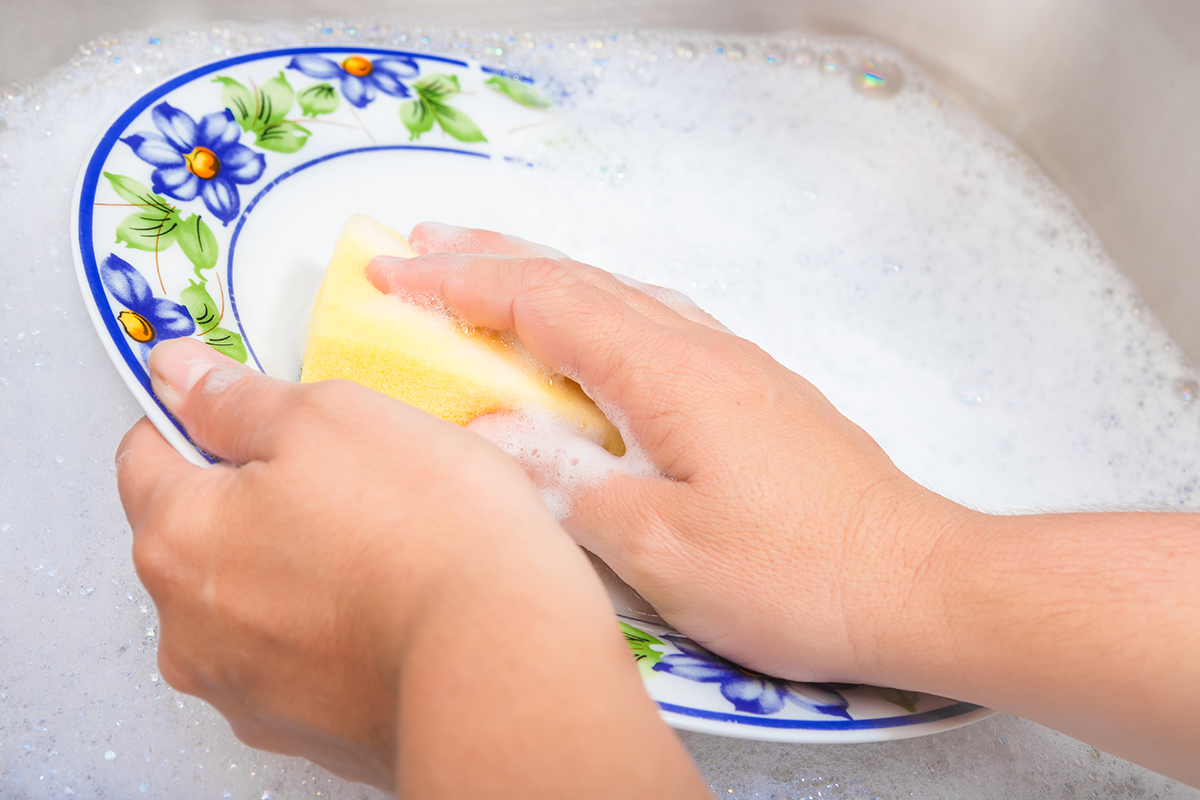 Sep
28
2018
Sep
28
2018
The Complete Guide to Stain Removal
We care for our furniture, the carpet, and our attire that we love. You have probably invested time and effort in finding the best value for your money. However, all that could be destroyed in a moment of carelessness, when your bowl of Laksa or that romantic glass of red wine slips out of your hand and leaves lasting stains on your shirt or pants.
Luckily, when it comes to removing the toughest of stains, science can now come to the rescue. If you could act quickly and know what you are working on, an otherwise permanent damage could be averted, and your favourite dress could be salvaged from ruins.
The laundry detergent steps up
We are used to looking at products and thinking only of the specific purpose for which they are branded. For instance, laundry detergent is invariably associated with all-purposes laundry, and rarely with stain removal. However, the laundry detergent is versatile in its ability to serve multiple purposes, from being a kitchen cleaner and a pest repellent to acting as a tough weed killer, and of course, stain remover.
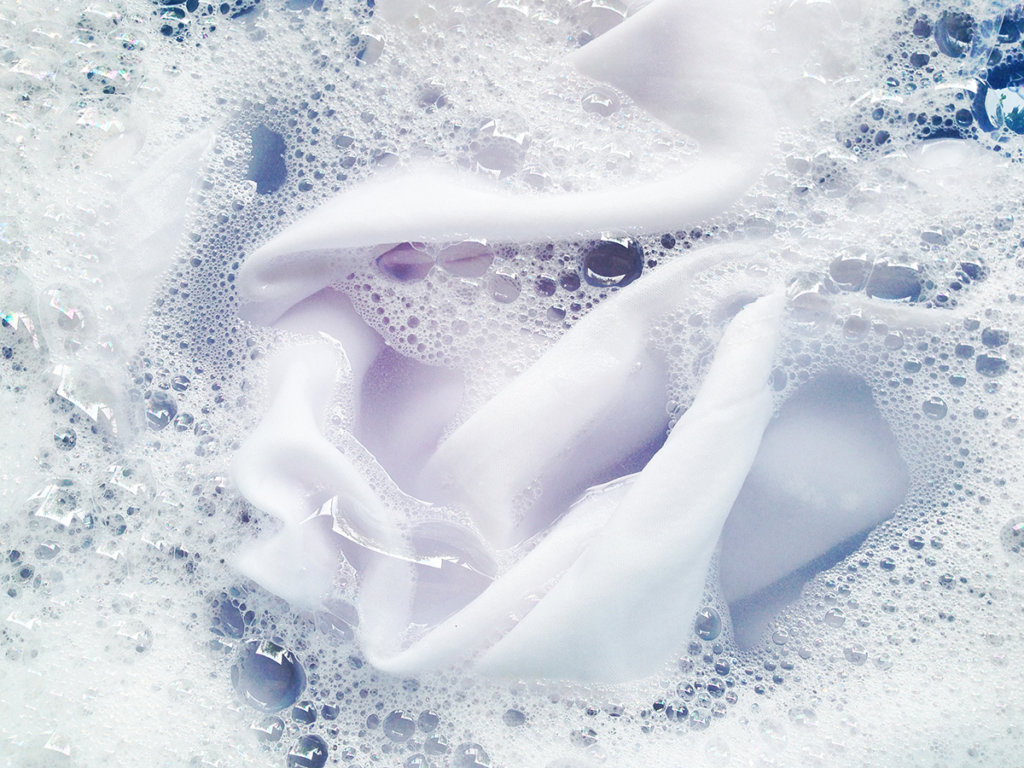
Imagine, you’re about to leave home and head to an important meeting at work. Since you’re in a rush, you quickly scramble together a sandwich and just as you are about to take the first bite, you notice that some of your sandwich is slipping between the bread. Before you know it your shirt is a mess.
Or, it could be a newly laid carpet that has just tasted your food – you really can’t let the stain seep in and settle down before you come back from work.
That’s when the friendly, affordable, and quick-acting laundry detergent can come in handy, turning out to be the unlikely saviour. You do not have to run from pillar to post searching desperately stain remover from your laundry when none exists. Just reach out to your reliable laundry detergent, add a teaspoon of it to a cup of water, mix them up in a spray bottle, target the stain and shoot!
Let the laundry detergent work its way through for a couple of minutes as you take a few deep breaths to focus on your upcoming day’s work. Reach out for an old brush to gently remove the stains that have been dislodged by the laundry detergent spray. Using a gentle vacuum on to the surface would completely remove the stain, as your laundry detergent doubles up as a trusted stain remover that saves your day!
Common stains
Grease stains

Grease stains can be gentle or stubborn; either way they aren’t pleasant. However, there’s no need to panic – whether the stains are mild and superficial or they are tough and stubborn, bio-home has the right solution for you from the unlikely quarters of laundry detergent and bio-home dishwashing liquid.
For mild grease stains, applying the bio-home laundry detergent on the affected spot, rubbing it gently, and washing the area away after scrubbing it with a soft brush would do the trick. If the stains were stubborn and well-entrenched, try bio-home dishwashing liquid instead – diluting the solution and gently rubbing it on to the affected spot would see the stains dissolve and disintegrate, as the powerful plant-based ingredients work their way through the grease to bring your fabric’s natural shine back.
You could follow up on the effectiveness of the dishwashing solution with a gentle wash of the fabric with bio-home laundry detergent to give it the impeccable finish that it deserves. As always, when you use tougher detergents such as the dishwashing liquid, it would help to test them on a hidden area of your clothing or fabric just to make sure the detergents do not wash away the colour of the fabric along with the grease stains. You may also want to check and follow the washing instructions for your clothes as provided by the manufacturer before you go ahead and remove stains.
Coffee stains
Who doesn’t love the kick of a cup of coffee! But what could ruin the experience, is a drop of it or a spill that could leave your clothes marked with stains. Here are five ways to remove coffee stains from your favourite dress.
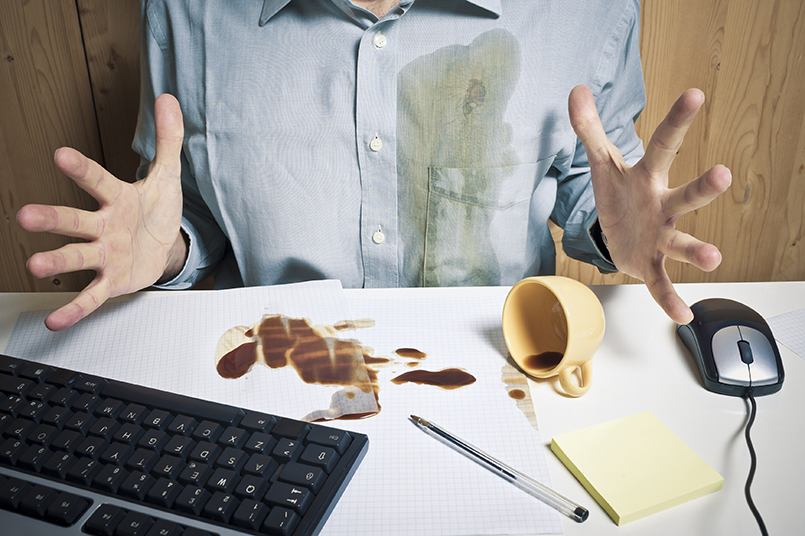
Blot the stained area
The first step in stopping the ruins from your coffee from spreading all over is to soak it up. You could reach out for a piece of blotting paper or a paper towel that could readily absorb the liquid that is still fresh on the fabric. This would reduce the intensity of the stain and would also minimise the area by preventing the spread as a first step.
Rinse with cold water
When it comes to coffee stains, cold water is the way to go. Ideally, if the affected fabric is clothing, you could use tap water, as running water takes the stain along. Leave the stained area in running water for 3 – 5 minutes depending on the intensity of the stain. It would be a good idea to gently rub the stain with your fingers while still exposed to the running water, as this would help loosen the marks.
You may want to check the status of the stains and repeat the process for two or three times to dilute the stain. If the stain is on a carpet rather than on cloth, you could keep up the flow of cold water continuously in a thin, steady stream, and rub it simultaneously to remove the stain.
strong>Use detergent
If the stains are old and are persistent, merely turning on the tap and using cold water may not be of much help. Persistent stains seep deep into the structure of the fabric, and need the additional intervention of detergent. After you have left the fabric wet and damp with running cold water, rub a small quantity of detergent on to the affected area. Leave it on for the detergent to work on the stain for a few minutes.
Rub the stained area gently again, and start rinsing the area with cold water. This would loosen the stain that has been dislodged by the detergent, with the running water taking the remnants of the particles along, rejuvenating your cloth back to its original lovely self.
Add vinegar to remove stains
Vinegar is an astringent – an astringent is a chemical whose nature is to cause tissues to shrink. Persistent stains may be hard to remove, sometimes beyond the powers of a normal detergent. In such instances, vinegar comes to the rescue.
You could form a paste with water and detergent mixed with vinegar, rather than rubbing vinegar on its own on to the fabric. You may be better off doing a test wash on a small, unnoticeable area of your cloth to make sure the colour does not fade away with the combination of detergent and vinegar.
After you are satisfied that your fabric is capable of withstanding the power of the combined solution, rub the paste on to the area of the stain and massage it gently. Then, grab a toothbrush or a cloth brush, as may be appropriate, to remove the stain. Rinse it under running water to eliminate the stain completely, and here you are with a fresh piece of fabric as if it was never stained at all!
Stain sticks
Your mild, strong, or persistent stains should be removed with one of these four steps. However, if your cloth is still left with remnants of the stain despite the best of your efforts, try using stain sticks. As always, conduct a test run before you get on full-fledged with your stain removal effort.
Leave the cloth for around 10 minutes for the stain stick to work its magic on to it. If stains still remain, you may want to try again with the detergent route to do away with it.
One word of caution about using a dryer after you have tried with these efforts would be to check the status of the stains before drying it. Heat tends to make the stain get further settled into the fabric, and hence, should only be used after the stains have been removed.
Wine stains

One of the most common stains to occur on shirts (more precisely, by Murphy’s Law, white shirts) would be wine stains. Just as you lose yourself in the smooth texture of wine trickling down your throat, a drop or two invariably finds its way on to your shirt too!
One quick fix to deal with wine stains would be to apply salt on the affected area, and leave it settling in for an hour or so. Brush off the salt in an hour and wash the area as you would normally do to see the stain disappear! This method works best when the wine stains are attended to within a minute or two of the spill.
Essential tips on dealing with general stains
Stains are of many kinds, and they all need to be dealt with in their own merit. But there are some common aspects that need to be taken into account when you try to remove stains.
Time is the key
It is in the nature of stains to set into the fabric with time. Oil-based stains, for instance, tend to bond very well with the fabric chemically, making them tough to remove.
The more the time it takes for the stain to be removed, the more the possibility of the fabric being discoloured and damaged, potentially making it impossible to be used again. Even if you do not have a stain remover handy, reaching for bio-home laundry detergent or dishwashing liquid could do the job for you, as long as you act on time.
Know your fabric
Whatever method you may use to remove stains, it all starts with knowing and understanding your fabric first. Not every solution may be ideal for every situation. Trying out stain removal with cold running water, for instance, may be a simple solution that prevents prospects of damage to the cloth during stain removal.
Use the right method
Once you know your fabric, it then takes well-thought out approaches that ideally match the situation. Whatever method you may use, ensure that you have tried it out on a spot that is not too obvious to ensure that the solutions used do not damage the cloth involved.
Treat persistent stains accordingly
Persistent stains are just that – they would not be removed by normal methods to remove them. There is no standardised recipe for removing stains, and the ideal stain removal techniques start with identifying the kind of stain involved, such as oil or grease or food, and with understanding the fabric in question.
Woollen-clothing stains
You won’t see a lot of wool clothing in Singapore, considering its rather warm and humid weather. However, with a high proportion of Singaporeans travelling overseas, it is quite likely that woollen clothes form part of the staple baggage of the average Singaporean.
Woollen clothes tend to be sensitive, and commercial stain removers could well damage the fabric. A safe option would be to apply a solution made of equal parts of white vinegar with water – you could leave the solution in for around 15 minutes for the dirt to be dissolved and dislodged. In any case, you would do well to read the instructions attached to the label and follow them as applicable.
Dealing with stains
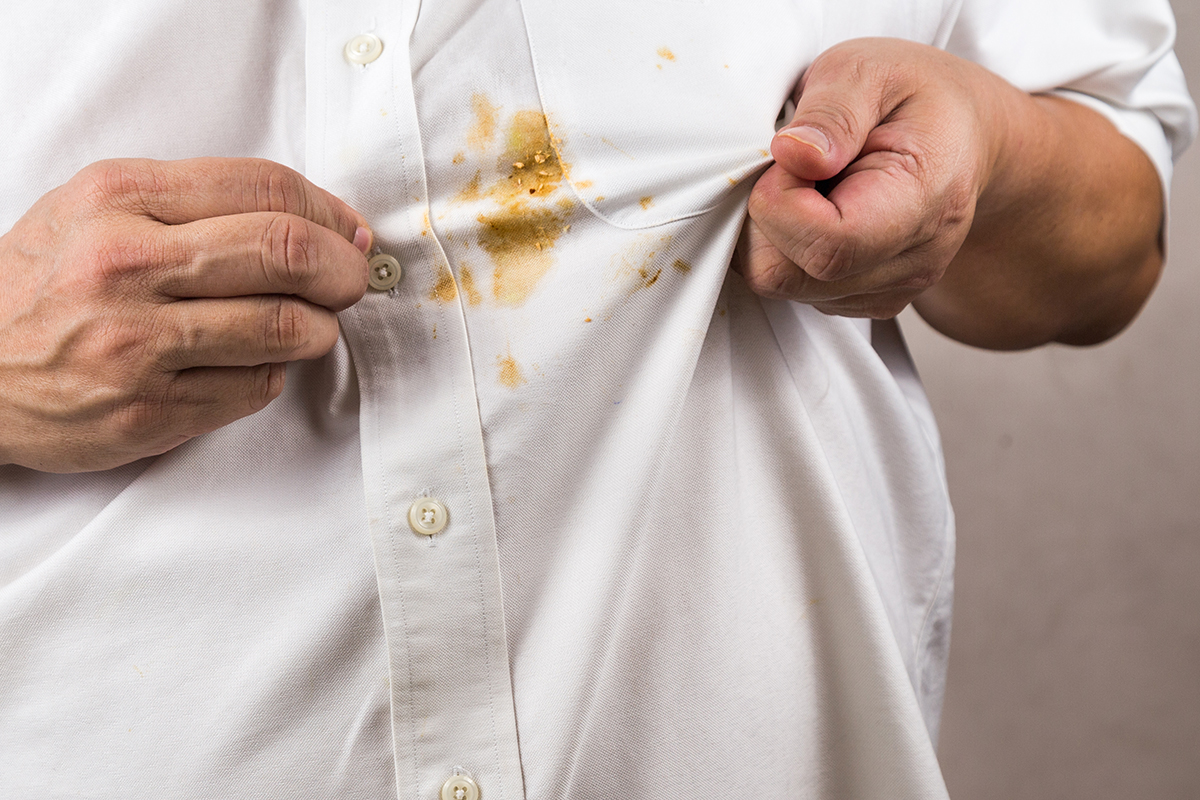
Stains are a reality of life and are virtually unavoidable – they are as much a part of life as grease, coffee, food and wine are! Dealing with stains is a tricky affair that requires presence of mind to act in good time. Responding with the right set of prompt actions could save your clothes and save you time and money in reinvesting on another set of attires that you loved.
Bio-home is a trusted supplier of eco-friendly, biodegradable cleaning products that are highly effective, even against stubborn stains. Check outour complete laundry guide for tips on how to wash and clean your clothes , or explore our product range for more information about how our all-natural, plant-based products could help you remove the toughest stains.


